Sector-specific Cash and Voucher Assistance
CVA can help people in crises address their needs within a specific humanitarian sector, such as water, food, health, shelter, livelihood, or protection. Sector-specific CVA can be restricted or unrestricted, and conditional or unconditional, and will typically be provided as part of a comprehensive package which may also include in-kind and service-based assistance.
Each sector has to consider different questions, challenges, advantages and risks when it comes to supporting people’s recovery within their area of expertise. This requires evidence, tools, guidance and capacity. Meeting sector-specific outcomes through CVA also requires a multi-sectoral understanding of needs and of household economic security – see Multipurpose Cash Assistance. While some sectors are very experienced in implementing CVA and have done so for many years, others are now catching up. Most humanitarian sectors are committed and have been increasing their efforts on sector-specific CVA. The Global Cluster Coordination Group (GCCG) is also coordinating cross-cluster work to improve the sectoral used of CVA.
Current priorities
The CALP Network works closely with the cash technical groups/task teams within the global clusters, who have been defining their 2020 priorities and workplans during their regular meetings. A general overview and specific details of these priorities across each global cluster is available here.
Sector-specific CVA subpages
Camp Coordination, Camp Management and Cash and Voucher Assistance
Page
Find out more about Camp Coordination and Camp Management (CCCM) in relation to Cash and Voucher Assistance (CVA). For the most up to date information visit the Global CCCM Cluster’s website.
Education and Cash and Voucher Assistance
Page
A brief introduction as to how Cash and Voucher Assistance (CVA) can support education outcomes. For the most up to date information please visit the Global Education Cluster’s website.
Food Security and Cash and Voucher Assistance
Page
A brief introduction as to how Cash and Voucher Assistance (CVA) can support food security outcomes. For the most up to date information please visit the Food Security Cluster Cash and Market Working Group web page.
Health and Cash and Voucher Assistance
Page
The content on this webpage has been developed with the Global Health Cluster.
Nutrition and Cash and Voucher Assistance
Page
Malnutrition continues to pose a major challenge to human well-being around the world. In 2020, an estimated 144 million children under five suffer from stunting (i.e. chronic malnutrition) , 47 million children under five were wasted (i.e. acute malnutrition) , of which 14.3 million were severely wasted, and an additional 340 million suffered from micronutrient deficiencies (UNICEF/WHO/WB...
Protection and Cash and Voucher Assistance
Page
How can Cash and Voucher Assistance (CVA) support protection outcomes? Please find a brief summary below, and for the very latest information, refer to the Global Protection Cluster Task Team on Cash for Protection.
Shelter and Cash and Voucher Assistance
Page
How can Cash and Voucher Assistance (CVA) support shelter outcomes? Please find a brief summary below, and for the very latest information, refer to the Shelter and Cash Working Group.
WASH and Cash and Voucher Assistance
Page
How can Cash and Voucher Assistance (CVA) support WASH outcomes? Please find a brief summary below, and for the very latest information, refer to the WASH Cluster’s Cash and Markets Technical Working Group.
Latest

Philippines: Cash Vouchers via Debit Cards
Report
This one-page poster provides an overview of ACF’s programme to provide cash vouchers via debit cards in Cotabato City and Sultan Kudarat, Autonomous Regions of Muslim Mindanao, Republic of the Philippines

Voucher Fairs: A Quick Delivery Guide (booklet version)
Guidelines and Tools
A Quick Delivery Guide to using voucher fairs to implement a market-based emergency response. Prepared as a practical tool, this guide provides a brief synthesis of the necessary preconditions and advantages and disadvantages of using voucher fairs. It also provides practical implementation tips. This...

Water Access by Voucher
Report
This document presents an overview of the use of vouchers to connect vulnerable people in Somalia with water during an emergency response. The document provides thorough and practical guidance to implementing a water voucher programme, covering all phases of the project cycle including: programme...
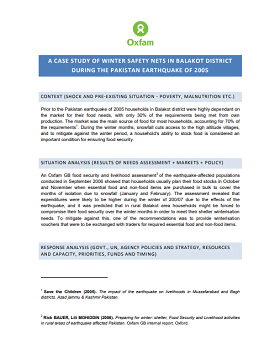
A Case Study of Winter Safety Nets in Balakot District during the Pakistan Earthquake of 2005
Case Study
This case study looks at Oxfam’s response to the Pakistan earthquake and the upcoming winter by providing winterisation vouchers to vulnerable households to be exchanged with traders for required essential food and non-food items. The paper looks at the context, situational analysis, response analysis,...
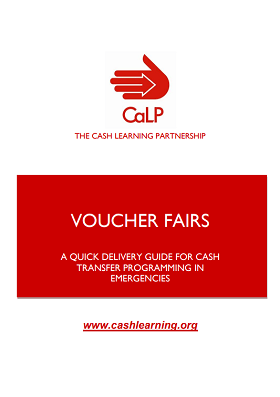
Voucher Fairs: A Quick Delivery Guide (screen version)
Guidelines and Tools
A Quick Delivery Guide to using voucher fairs to implement a market-based emergency response. Prepared as a practical tool, this guide provides a brief synthesis of the necessary preconditions and advantages and disadvantages of using voucher fairs. It also provides practical implementation tips.
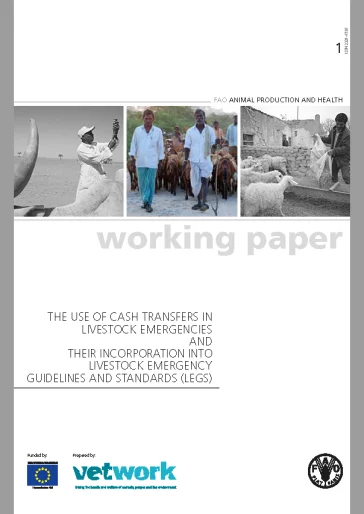
The Use of Cash Transfers in Livestock Emergencies and their Incorporation into Livestock Emergency Guidelines and Standards (LEGS)
Guidelines and Tools
This paper reviews the use of cash transfers within the livestock sector and suggests how they can be incorporated into and support Livestock Emergency Guidelines and Standards (LEGS). The paper’s structure reflects the stages of the LEGS Handbook as these in turn reflect good project cycle management....
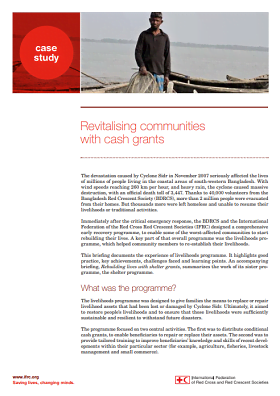
Revitalising communities with cash grants
Case Study
This case study gives an overview of the Red Crescent’s response programme in Bangladesh following the devastation caused by Hurricane Sidr in 2007. Part of the overall programme was the livelihoods programme, which helped community members to re-establish their livelihoods. The programme focussed on...
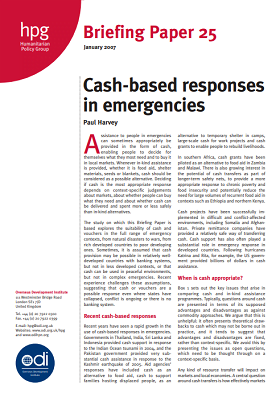
Cash-based Responses in Emergencies
Report
This short HPG briefing paper looks at the suitability of cash based responses in a range of emergency situations. It gives a rapid overview of recent cash based responses and examines the key issues around comparing cash and in-kind programmes. It briefly looks at the impact of cash, the issues of...

Vouchers – A quick delivery guide for cash transfer programming in emergencies
Guidelines and Tools
A quick delivery guide to using vouchers to implement a market-based emergency response. Prepared as a practical tool, this guide provides a brief synthesis of the necessary preconditions and advantages and disadvantages of using vouchers. It also provides practical implementation tips.
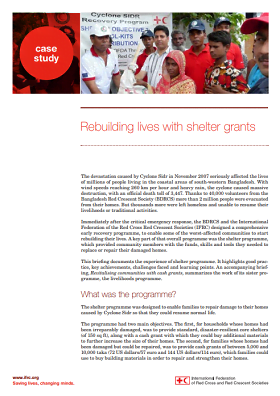
Rebuilding lives with shelter grants
Case Study
Bangladesh following the devastation caused by Hurricane Sidr in 2007. Part of the overall programme was the shelter programme, which provided community members with the funds, skills and tools they needed to replace or repair their damaged homes. Dependent on the damage to the homes, households were...
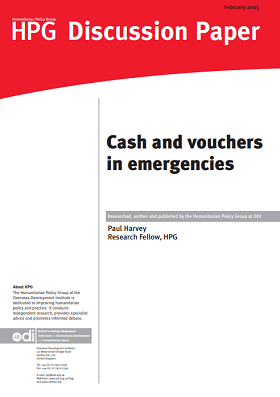
Cash and Vouchers in Emergencies
Report
This HPG discussion paper examines all aspects of using cash and vouchers to assist people in emergency situations. It provides a background to the literature and theory around cash and vouchers, looks at the current picture through selected examples and examines the decision making process on the...
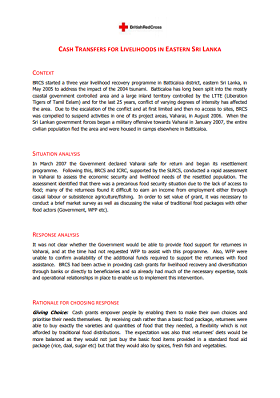
Cash transfers for livelihoods in Eastern Sri Lanka
Case Study
This case study looks at the British Red Cross’ intervention in Eastern Sri Lanka, following the Tsunami, whereby resettled households were provided with the cash equivalent of a food ration in order to bridge the gap before the next harvest and resumption of livelihood activities. The paper discusses...

Planning and implementing cash transfers in emergencies: Practical insights from Pakistan
Report
Access The Report Here The use of cash transfers and vouchers, or together ‘cash-based responses’, has grown remarkably in recent years. Cash transfers provide beneficiaries with money, while vouchers ensure access to food for a predefined quantity or value in identified outlets. While there is a...
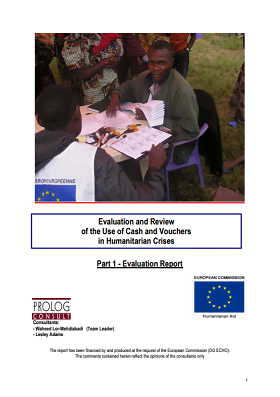
Evaluation and Review of the Use of Cash and Vouchers in Humanitarian Crises
Report
This report is the second of two reports commissioned by DG ECHO to support the development of a coherent policy regarding the use of cash and vouchers in humanitarian crises. The first report evaluated DG ECHO’s partners’ use of cash and vouchers. This second report reviews cash and voucher...
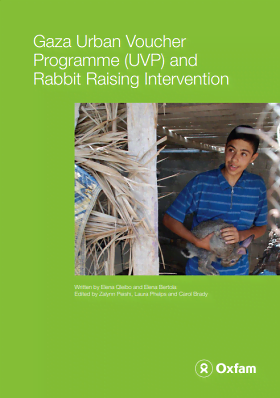
Gaza Urban Voucher Programme (UVP) and Rabbit Raising Intervention
Case Study
This case study looks at an Oxfam commodity voucher programme which supported households to improve their access to food, as well as a rabbit rearing intervention to help protect the livelihoods of unemployed people in the Gaza. The document looks at the rationale for programme choice, the project...

Support to Economic Recovery of Urban Households in Karoi town, Zimbabwe (the CALP Network Case Study)
Report
In the urban area of Karoi, Zimbabwe, Save the Children combined cash for work with livelihoods support to meet the immediate food needs and support the economic recovery of poor families. The project used smart cards to transfer cash to beneficiaries, which proved to be an appropriate payment...
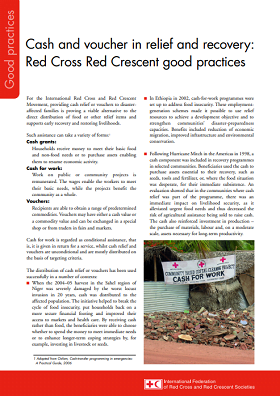
Cash and voucher in relief and recovery: Red Cross Red Crescent good practices
Report
A two-page brief giving some examples of the Red Cross / Red Crescent movement’s experience using cash grants, vouchers, and cash-for-work in emergency response.
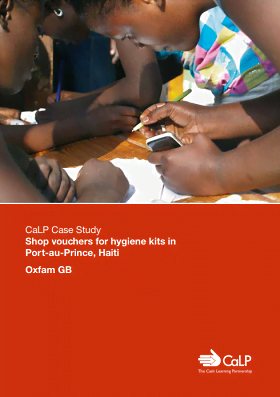
Shop vouchers for hygiene kits in Port-au-Prince, Haiti (the CALP Network Case Study)
Report
In the aftermath of the 2010 Haiti earthquake, Oxfam’s Public Health Promotion team used a voucher programme to provide beneficiaries with essential hygiene items through local shops. The voucher system was chosen so that beneficiaries could access hygiene items in a normal and dignified way, and in...
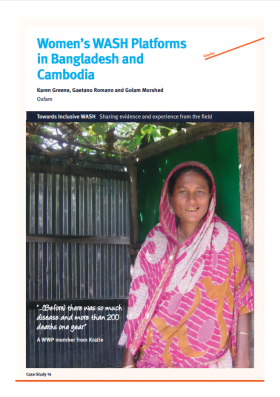
Women’s WASH Platforms in Bangladesh and Cambodia
Case Study
Oxfam’s multi-country portfolio is located in more than 100 remote rural communities in six countries and is funded by AusAID’s Civil Society Organisation WASH Fund. The water, sanitation and hygiene (WASH) projects in Bangladesh and Cambodia deliver multiple outcomes including improving water and...
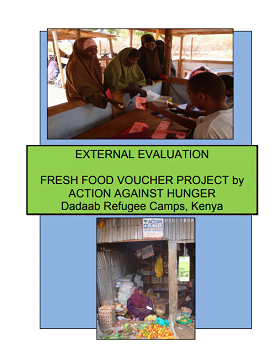
External Evaluation: Fresh Food Voucher Project by Action Against Hunger in Dadaab Refugee Camps, Kenya
Report
The town of Dadaab in North Eastern Kenya is home to three refugee camps: Hagadera, Dagahaley and Ifo hosting over 240,000 people. The camps were established in mid-1992 after the closure of the Liboi camp, which was too close to the Kenya/Somali border to ensure adequate security. Continued insecurity in...


